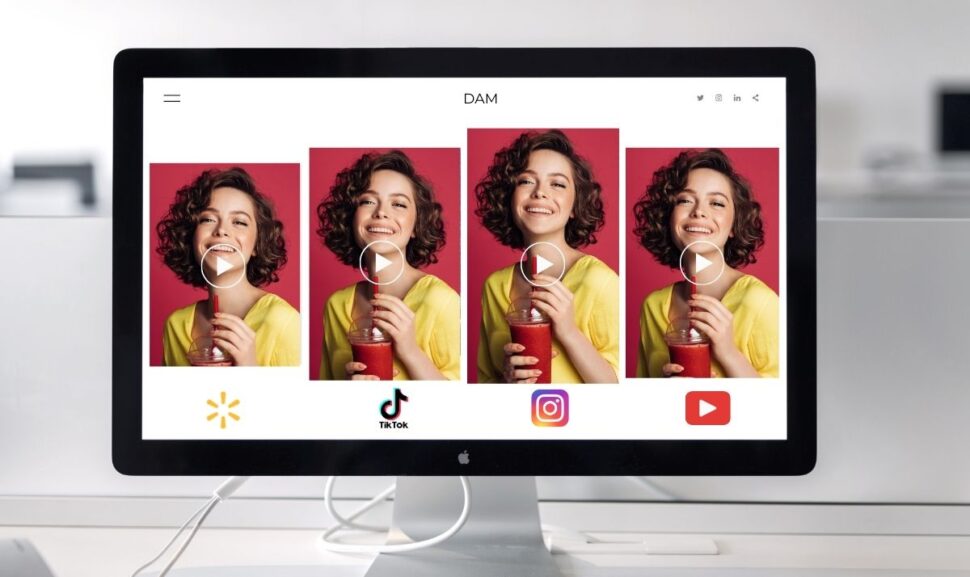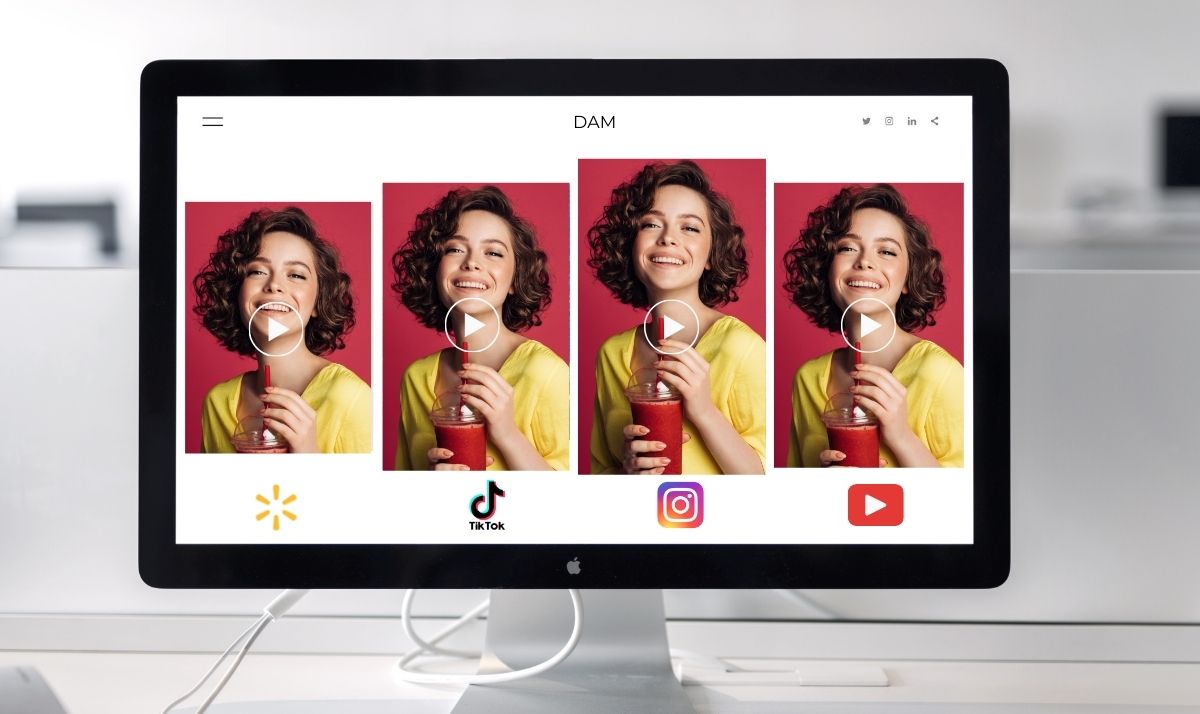
Essential Guide to Video Content Monitoring for Brands
Video content has become a cornerstone of marketing strategies, especially for large corporations. The rise of video across platforms like YouTube, Instagram, and TikTok means that managing video content has grown increasingly complex. Tracking where your content goes, ensuring proper licensing, and protecting your brand’s integrity are all critical challenges that require sophisticated solutions.
Gregg Guest, VP of Product Management at FADEL, recently spoke at a webinar “Frame By Frame: Keeping Tabs on Your Video Content (now available on demand), and highlighted the growing need for companies to adopt video content monitoring systems. In this blog post, we’ll explore the essential steps and considerations for implementing such a system, using insights and key takeaways from Gregg’s presentation.

Why Video Content Monitoring Matters
Video content represents a significant investment for corporations, both in terms of production and brand exposure. However, once these videos are out in the world, it can be difficult to track where and how they are used. Gregg Guest emphasized the risks of not having a proper monitoring system in place, noting that “underneath that 30-second spot, there’s incredible complexity.”
The complexities range from rights management to brand compliance, and from tracking unauthorized use to ensuring the right assets are deployed in the right context. A robust monitoring system helps marketers stay on top of these issues and prevents costly mistakes, such as using content beyond its licensed duration or in territories where rights may not apply.
How to Implement an Effective Video Content Monitoring System
Step 1: Identify Your Monitoring Needs
Before implementing a content monitoring system, the first step is to identify what you need to track. This often includes:
- Ensuring compliance with licensing agreements
- Tracking where your videos are used (e.g., across social media, websites, or third-party platforms)
- Monitoring for unauthorized use
- Managing the consistency of your brand message
Gregg Guest illustrated these challenges, explaining that “when your video leaves your organization and goes out into the world, there’s a need to keep tabs on it, save time, save money, and avoid headaches.” For large corporations managing vast libraries of video content, this is no easy feat.
Establishing a standardized process to capture the content provider’s asset rights at ingestion will save time and headaches. Furthermore, assigning a responsible party will increase the likelihood that standardized processes are followed and ensure all rights are recorded.
Step 2: Choose the Right Tools for Monitoring
Once you’ve identified your needs, the next step is selecting a tool or platform that fits your requirements. The decision for the right is dependant on your use case. Do you need to identify content for takedowns, identify infringement or piracy, audit your sites, or check that you have the necessary licenses? According to Guest, it’s essential to have a tool that not only monitors usage but also ensures compliance with rights agreements.
FADEL’s Brand Vision, the tool showcased in the webinar, offers a sophisticated solution for tracking video content across various platforms. “Brand Vision uses AI image matching algorithms to track videos at the frame level, allowing for real-time monitoring of where your content is used,” Guest explained. This ensures that even subtle variations of a video—like shortened versions or edits—can still be tracked and identified.
Step 3: Integrate With Existing Digital Asset Management Systems
The key to a successful implementation is ensuring your new monitoring system integrates seamlessly with your existing digital asset management (DAM) systems and workflows. In many organizations, marketers already use tools to manage their content libraries, but video requires more sophisticated solutions.
Guest discussed how Brand Vision integrates with DAM systems, explaining that “we take hundreds of keyframes from video clips and match them with the content in your DAM, allowing for accurate tracking.” He emphasized that automation is crucial for organizations managing large volumes of content, stating, “You want to automate whatever you can. Having to manually check video content for compliance daily can become overwhelming.”
Step 4: Automate Compliance and Notifications
One of the major benefits of a video monitoring system is automation—particularly around rights compliance and reporting violations. Having automated workflows for handling violations, takedowns, or licensing expiration can prevent mistakes before they become legal or financial liabilities.
Guest elaborated on the flexibility of FADEL’s Brand Vision in this area: “We have a built-in workflow engine that triggers specific tasks for a team responsible for violations. Or, you can integrate with your own internal workflow systems via our APIs.” This flexibility allows organizations to build a solution that fits their unique needs and workflows. According to Guest, “we have reports and violation alerts that can be subscribed to by different people. These can be set up to automatically notify teams when there’s a violation or when content has been used incorrectly.”
Step 5: Measure Success and Adjust
As with any new system, it’s important to track the success of your video content monitoring program. Guest suggested that “once your system is in place, make sure you’re reviewing the data it provides, such as reports on violations and usage patterns.”
This data can inform future content decisions, helping marketers understand which platforms are yielding the most results and whether any adjustments are needed in licensing or distribution strategies. Additionally, knowing that your content is being tracked accurately brings peace of mind and lets you focus on more strategic tasks.
The Risks of Not Monitoring Your Video Content
Failing to monitor your video content can result in several risks for a corporation:
- Rights Violations: Using content outside of licensed terms can lead to legal complications and financial penalties.
- Brand Inconsistencies: Unauthorized edits or misuses of your videos can hurt your brand’s image.
- Uncontrolled Distribution: Without tracking, content can end up on platforms or in markets where you never intended to use it.
Guest noted, “If a third party takes your content and uses it without your knowledge, you’re not liable. However, the reputation risks and lack of control over your brand message can still be damaging.” This is why proactive content monitoring is key.
Conclusion: Taking Control of Your Video Content
In today’s content-saturated world, implementing a video content monitoring system is not just a nice-to-have—it’s essential. As Gregg Guest pointed out, “Having the data and systems in place to track your video content as it moves beyond your organization is critical for saving time, money, and stress.”
Whether you’re managing video campaigns for a global brand or overseeing compliance for a large content library, a robust monitoring system ensures you’re not just guessing where your content goes. By tracking usage, ensuring compliance, and automating notifications, you can confidently manage your video assets while staying focused on driving your marketing strategy forward.
If you’re ready to take the next step, consider reaching out to a digital asset management expert, like FADEL, to explore how tools like Brand Vision can help your organization stay on top of its video content.












